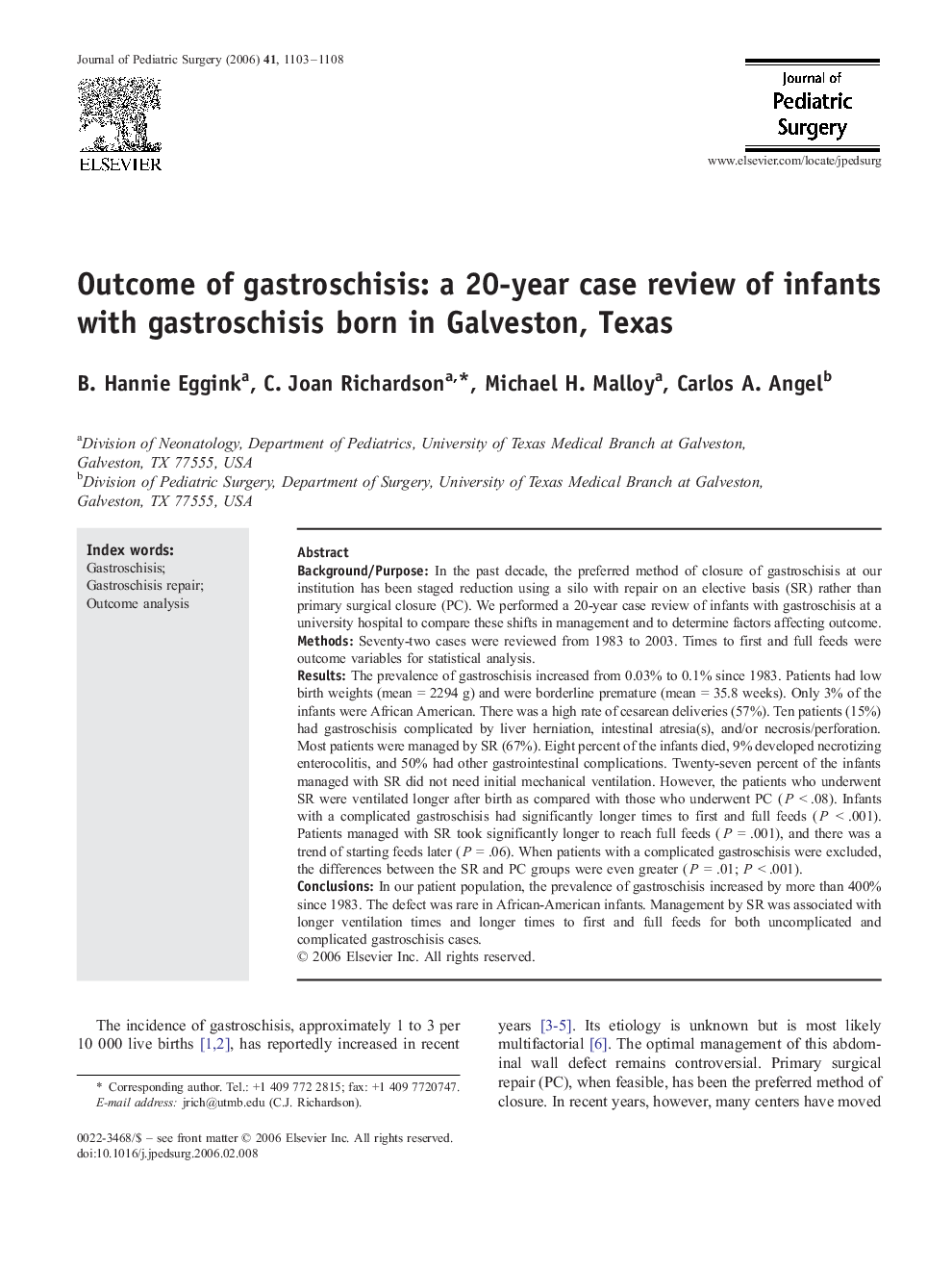| Article ID | Journal | Published Year | Pages | File Type |
|---|---|---|---|---|
| 4160239 | Journal of Pediatric Surgery | 2006 | 6 Pages |
Background/PurposeIn the past decade, the preferred method of closure of gastroschisis at our institution has been staged reduction using a silo with repair on an elective basis (SR) rather than primary surgical closure (PC). We performed a 20-year case review of infants with gastroschisis at a university hospital to compare these shifts in management and to determine factors affecting outcome.MethodsSeventy-two cases were reviewed from 1983 to 2003. Times to first and full feeds were outcome variables for statistical analysis.ResultsThe prevalence of gastroschisis increased from 0.03% to 0.1% since 1983. Patients had low birth weights (mean = 2294 g) and were borderline premature (mean = 35.8 weeks). Only 3% of the infants were African American. There was a high rate of cesarean deliveries (57%). Ten patients (15%) had gastroschisis complicated by liver herniation, intestinal atresia(s), and/or necrosis/perforation. Most patients were managed by SR (67%). Eight percent of the infants died, 9% developed necrotizing enterocolitis, and 50% had other gastrointestinal complications. Twenty-seven percent of the infants managed with SR did not need initial mechanical ventilation. However, the patients who underwent SR were ventilated longer after birth as compared with those who underwent PC (P < .08). Infants with a complicated gastroschisis had significantly longer times to first and full feeds (P < .001). Patients managed with SR took significantly longer to reach full feeds (P = .001), and there was a trend of starting feeds later (P = .06). When patients with a complicated gastroschisis were excluded, the differences between the SR and PC groups were even greater (P = .01; P < .001).ConclusionsIn our patient population, the prevalence of gastroschisis increased by more than 400% since 1983. The defect was rare in African-American infants. Management by SR was associated with longer ventilation times and longer times to first and full feeds for both uncomplicated and complicated gastroschisis cases.
